List of the Basic & Essential Mountain Bike Gear
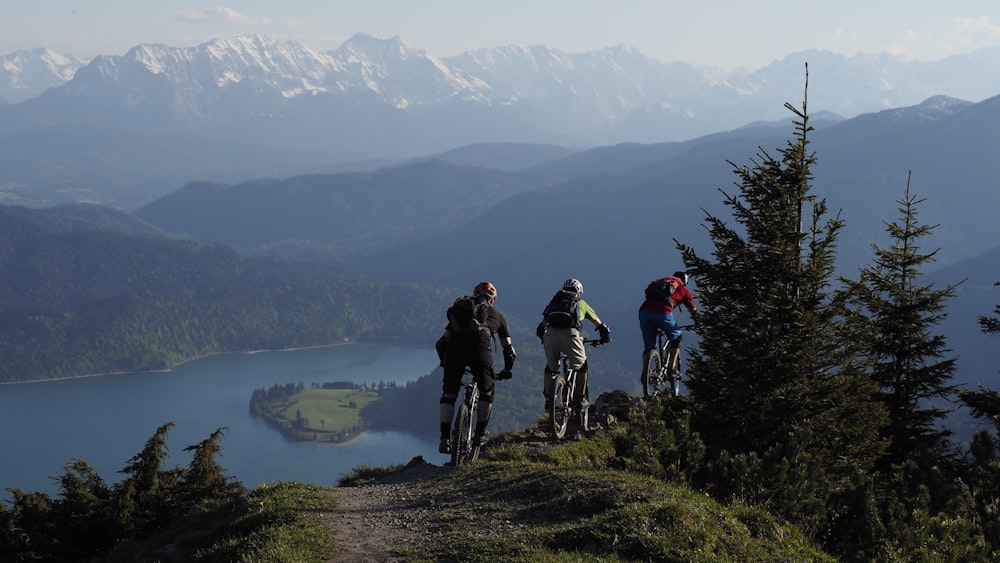
Reaching far-away locations requires a bunch of preparation beforehand. Most of the essential mountain bike accessories are designed the way they are for obvious reason – find out why down below!
Unlike road biking, mountain biking presents additional challenges that require specific gear and clothing to ensure you have the safest and most comfortable time in the saddle. Road cyclists tend to go for tight, lightweight, and aerodynamic clothing aimed purely at reducing drag and increasing speed.
With mountain biking, weight and speed are less of a concern, so the clothing and gear are more focused on protection and comfort. Clothing tends to be baggier and made from thicker, more durable fabrics with pockets for tools, food, and another kit.
Of course, you’re welcome to wear whatever you want when mountain cycling but certain MTB gear will better protect you from branches, rocks, and other obstacles you may come across on the trails. Depending on how adventurous you are, you may want to invest in special padding, shoes, and gloves to avoid injury.
Every hobby can get addictive, but hey, it is seemingly safe to assume that cycling is one of the good ones, right? Well, you will be investing in your health and get to know the ins and outs of. Whether you are a seasonal cyclist or a beginner starting out – there is the same set of things you might want to consider having with you when pedaling out next time.
1. Apparel
Jerseys

Most MTB bikers wear mountain bike jerseys, which come in both short and long sleeve versions depending on the weather. In some ways, they are similar to road bike jerseys made from stretchy material designed to wick away sweat and with a front zip for ventilation. However, they tend to be tougher to avoid getting torn when caught on branches and thorns.
Whatever your biking style, you’ll be more comfortable wearing some form of cycling jersey, whether for warmth or protection. Waterproof cycling jerseys are also available for wet conditions, helping to keep you warm and dryer for longer. MTB jerseys are usually a blend of synthetic and polyester materials mixed with natural fibers like merino wool.
Shorts

With aerodynamics less of a concern, MTB cyclists tend to go for more stylish, loose-fitting shorts. Mountain bike shorts usually have a tight-fitting inside lining with padding and a looser, outer shell with pockets. Like the jerseys, shorts are made from lightweight but thick fabrics like nylon and polyester that can handle the abuses of obstacle-filled mountain trails and forests.
14 Best Mountain Bike Shorts to Stay Comfortable and Safe on the Trails
The padding on MTB shorts is typically thinner than road bike shorts as MTB cyclists tend to spend less time in the saddle and more time standing up. The liners are usually removable so that they can be exchanged with thinner or thicker pads or replaced overtime when they wear out.
Shoes
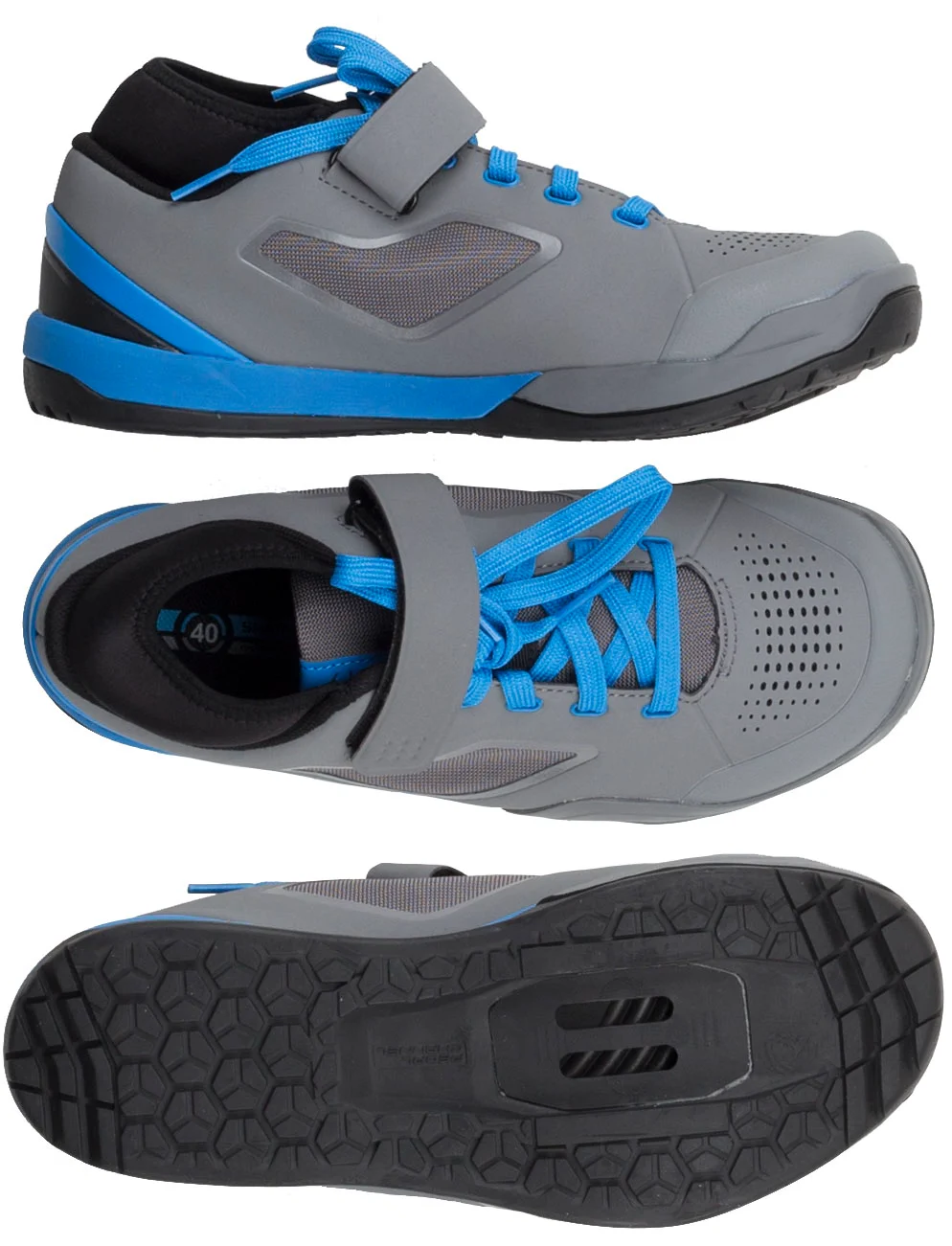
For recreational MTB riding, you can use any trainer or skateboarding shoe for adequate grip on the pedals. However, for intense downhill riding and park tricks, you’ll want to consider clipless pedals and shoes with cleats. Despite the name, clipless shoes actually clip into the pedals whereas clip-on pedals have a strap to slide your shoe into.
Choosing between clipless vs flat pedals and shoes largely comes down to preference, with clipless shoes costing considerably extra as you’ll also need to buy clipless pedals. Clipless shoes also require a level of training to get used to the action of clipping in and removing the shoe. However, for extreme MTB riding, clipless shoes offer a far greater degree of stability and protection from accidents.
Most manufacturers have a unique clip-in method, like SPD or ‘eggbeater’, so if buying clipless shoes, make sure they fit with your pedals. Unlike road bike shoes, MTB cleats are recessed into the shoe so that you can walk normally with them.
Gloves
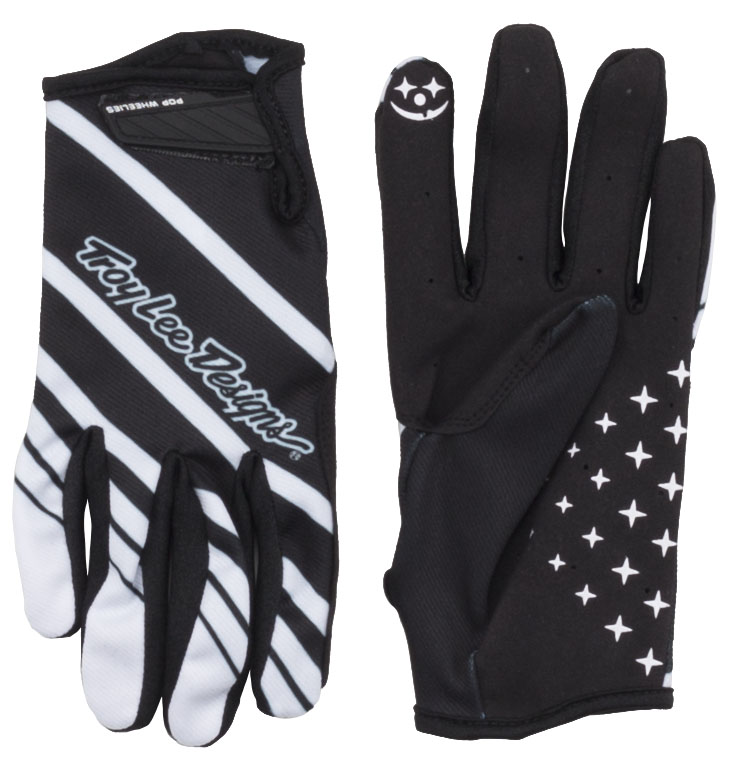
While MTB gloves are not technically a necessity for riding, they can certainly help to protect your hands and grip the handlebars better. As any seasoned cyclist will know, when coming off the bike the first thing you do is put your hands out to stop yourself. This can result in severely cut-up hands if you aren’t wearing protection.
Cycling Gloves also help to reduce sweat so your hands don’t slide off the grips so easily on hot days. For extreme riding, downhill gloves come with additional plastic or carbon protection in the event your hand hits a tree or rock while holding the bars. MTB-specific gloves tend to have thinner, stronger material for better contact with the handlebar grips.
Eyewear

Most cyclists wear some form of eyewear to protect against sunlight, dust, branches and loose stones. For extreme riding, goggles can provide extra protection from tree branches and falls that result in face-planting.
Most professional glasses and goggles have interchangeable lenses for differing lighting conditions. In making the choice between goggles vs shades you should assess the thickness of the foliage you’re cycling through and the possibility of crashing with your face near the ground.
Helmets
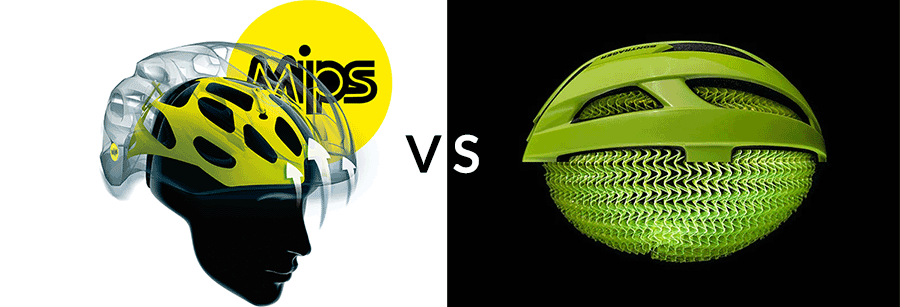
No introduction need when it comes to the importance of protecting your head. Remember, nobody plans to crash!
2. Puncture Repair Kit
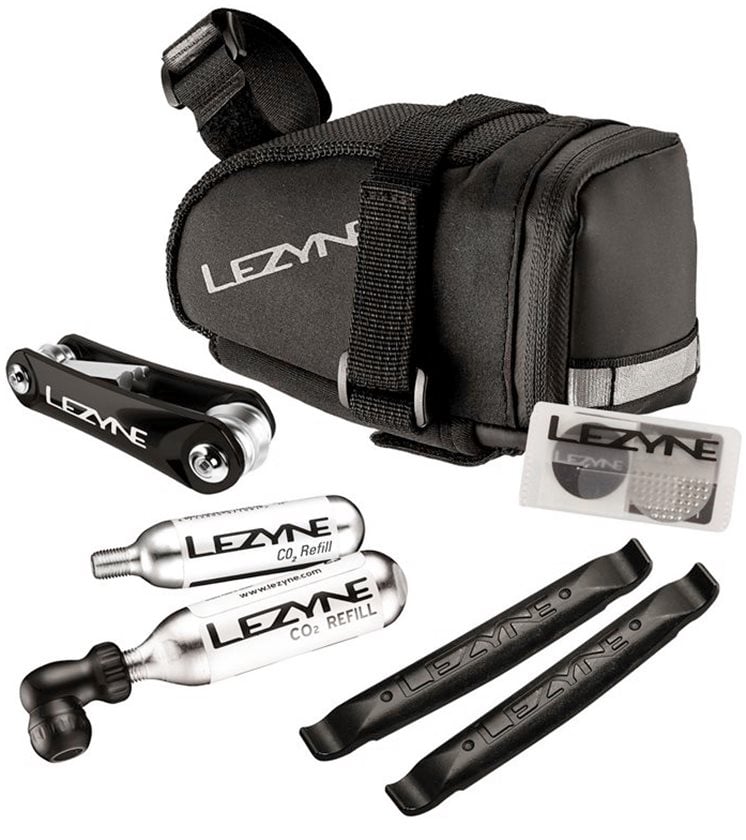
No matter how good your tires are, punctures are inevitable and eventually, you will get one, so be prepared. There’s nothing fun about walking for hours while pushing your bike back to your car or house.
These days many mountain bikes have tubeless tires, while others still have traditional tubed tires. Each has its own advantages and disadvantages. One key benefit of using tubeless tires for mountain biking is that they can be run at low pressure, providing a smoother ride and better grip when climbing.
With traditional tubed tires, you’ll need to carry a patch kit and/or spare tubes plus a pump or CO2 canisters. This adds a bit of weight but ensures you will always be able to recover from any punctures or burst tires.
Tubeless tires don’t require a tube but rather seal tightly around the rim and are filled up directly with air. You then inject a liquid sealant that automatically seals any punctures, so you can keep riding without interruption. Most people prefer this method because it’s easier and requires fewer tools but if you get a large puncture or the rim seal comes to lose you could be stuck. For this reason, many tubeless riders also carry at least one spare tube.
- Spare tubes
- Puncture kit
3. Hydration
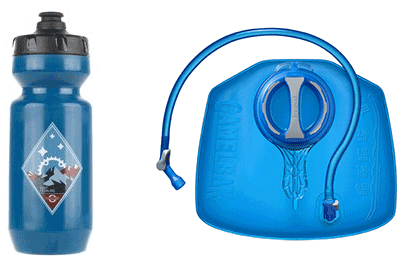
Although less vital than clothing and flat kits, hydration is another critical part of any long ride. Some riders like to carry water in bottles held in bottle cages on the frame while others prefer wearing a camelback – a plastic bladder you wear strapped on your back.
Bottles are cheaper and therefore more common than camelbacks but are difficult to drink from while in motion because you need to take one hand off the handlebars.
Water bottles vs Hydration packs – Which is the Best Way to Stay Hydrated?
Some modern MTB frames don’t have space for bottle cages due to their advanced suspension systems so you have no choice but to carry water in a backpack or camelback.
Many riders prefer the ease of a camelback because you can drink without needing to stop. However, on hot days it can be uncomfortable to wear a camelback and the extra weight can be unbalancing.
4. Tools
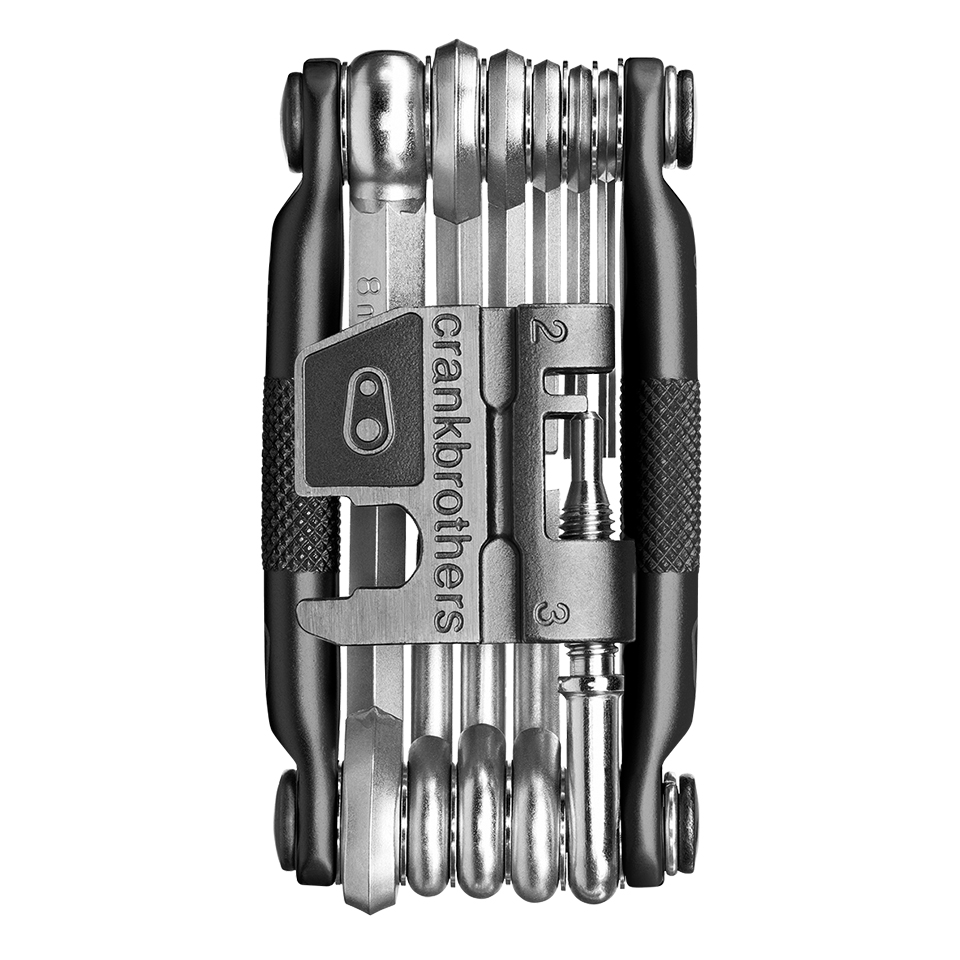
Every serious mountain biker needs at least a few essential tools in case of minor problems out on the trail. A good quality multi-tool is often all you need, with several hex keys, screwdrivers, spoke wrenches, and chain tools. These tools will fix almost any problem on your bike, from changing the chain and tuning the gears to truing the wheels and tightening the brakes.
Popular brands like Leatherman and Park Tool make several MTB-specific multitools, all of which are small enough to fit in a pocket or frame bag. If you’re running tires with tubes, you should also carry tire levers to pry off the tire when fixing a flat. Some multi-tools even include a tire lever but often you need two for very stiff tires.
Other tools that are not essential but could come in handy include a socket wrench for removing the bottom bracket, a chain whip to take off the cassette, and a set of brushes for cleaning the drivetrain.
5. Packs & backpack

In addition to the above gear, you may also want to take a camera, snacks, a phone, or other bits and pieces with you on rides. There are several options for carrying equipment on a bike, including hip packs, saddlebags, frame bags, and backpacks.
Hip packs wrap around your waist like a belt and include two or more zip pockets for keeping keys, small tools, and snacks. They are often worn by long-distance runners and work great for mountain biking too.
Saddlebags clip underneath the back of the saddle and come in various sizes, holding everything from small tools to clothing or even water bottles. Saddlebags are a great way to carry your flat repair kit but make sure they’re compatible if you have a dropper seat post.
Frame bags are useful for longer trips where you need more gear and they also come in several shapes and sizes. A full, triangular frame bag fits between the top tube, seat post, and down tube and can take a lot of gear. Smaller frame bags clip on the top or bottom of the top tube either near the seat of the handlebars.
Shop MTB Gear on REI Buy MTB Gear on Jenson USA

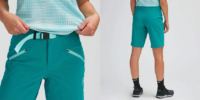


What an amazing guide. I found it to be a comprehensive guide for anyone new to the sport. Your emphasis on safety and comfort is commendable and aligns with the core values of the mountain biking community.
I agree with your top picks for essential gear like helmets, gloves, and protective eyewear, as well as the importance of a good quality bike lock. Thanks for sharing!